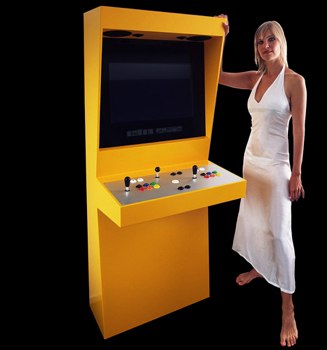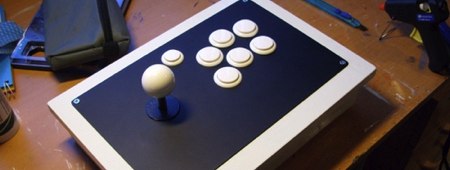We’ve been contemplating getting into MAME arcade cabinet building. It was sparked by someone dropping off a Street Fighter II machine at our office. Many people have been seeking to build the perfect arcade cabinet clone, but looking over this old dusty cabinet we realized that retro isn’t really what we want. We want an arcade cabinet with a modern aesthetic.
Retro Thing recently posted [Martijn Koch]’s Retro Space. The cabinet takes design cues from old cabinets, but uses modern technology like a 24″ LCD. It does feature classic controls though. Wandering through arcades today, most of the machines appear to be DDR style or vehicle sims. No one is building modern gaming machines.
We’re still in the planning stages of this build. We’d definitely use classic controls and combine it with an LCD 24″ or larger. The brain would probably be a Playstation 3. We could run any emulator we want on the Linux side and also play modern PS3 games. How it will look is still up in the air. We’re leaning towards building a standup 4 player brawler machine for playing games like Teenage Mutant Ninja Turtles, X-Men, and The Simpsons.
Have any of you built a MAME machine before? How would you build an arcade machine with a modern aesthetic?
















